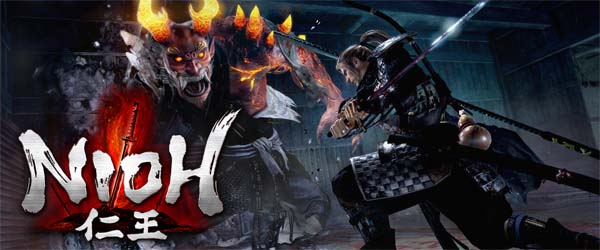
"If you own a PS4, and you aren't playing Bloodborne, then you are using your PS4 wrong!" That was the final line of my Bloodborne review. PS4 exclusives have been generally better than XBoxOne exclusives, but I haven't been particularly impressed yet. Until Dawn showed some promise and might be the only other PS4 exclusive that I'd even consider recommending. I gave up on Gran Turismo when GT4 started to turn into more of a car-collecting game rather than a racing game (I describe it as "Pokemon for cars"), and I've long since burnt out of the Uncharted games. I heard good things about the Ratchet & Clank reboot, but mascot platformers aren't really my thing, so I passed on that one. And I haven't gotten to play Horizon Zero Dawn yet.
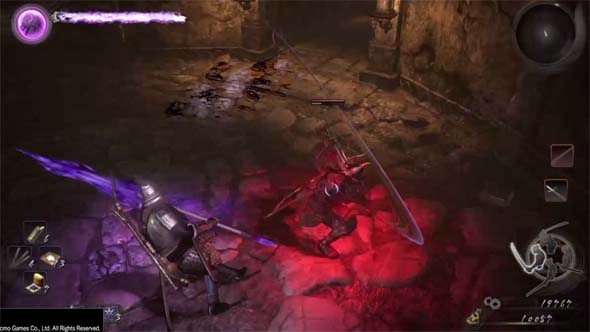
Nioh has fast, dodge-heavy combat, in which each weapon had multiple move-sets.
Well now there's a new PS4-exclusive on the market, and it's supposed to be competition for the Souls-Borne series. Nioh definitely shares a lot of superficial design elements with Dark Souls, and its fast, dodge-heavy combat using weapons that have multiple movesets seems thoroughly inspired by Bloodborne. But Nioh is also heavily inspired by Ninja Gaiden, and the game feel is very close to the classic Onimusha games. Although the original Ninja Gaiden was a good game for its time (and some of the sequels have been good too), it's these Ninja Gaiden influences that start to hamper the experience for me.
A random loot-dropping quarter-muncher
Nioh really started to lose me with its second true boss fight: Hino-Enma, a flying vampire and/or succubus who deals paralysis. The problem was that most damage just seemed unavoidable. All her attacks dealt damage through my blocks, which meant that dodging was the only way to keep alive. But she has a cheap spinning attack that (as far as I could tell) could not be dodged if you are in melee range when she starts the attack. All of her attacks felt considerably overpowered considering the limited (if present at all) wind-ups and cool-downs for them, especially the frustrating paralysis-inducing attacks. Even when she left openings, my attacks didn't stagger her, so she often countered with her own combo when I was in the middle of an attack, which just leeched precious more health. She just kept chipping away at my health like an arcade quarter-muncher, making the fight feel less about skill and more about just being efficient enough to defeat her before I ran out of elixirs. The only way to get more elixirs was to backtrack through the level and grind for them.
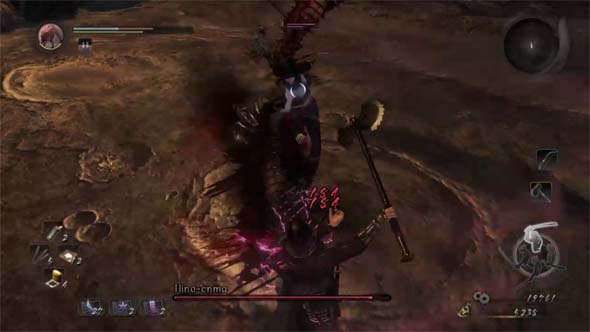
Bosses feel severely overpowered for their missions, and are tedious and uninteresting to boot.
After using a Travel Amulet to pick up my lost Amarita and return to the shrine, I power-leveled to 10 levels over the mission recommendation. This finally allowed me to beat Hino-Enma, but left me severely over-leveled for the next mission, which I cleared with absolutely no trouble at all. But then I got to that mission's boss (a lightning-spewing dog name Nue), and got repeatedly pulverized again. Even after grinding through some of the nearby Yokai (which posed virtually no threat to me at my level) to accumulate extra elixirs, I still didn't have enough to get through this boss's mile-long health bar. I don't mind being stonewalled occasionally, and I don't mind bosses being hard, but I expect the challenge to be more evenly-distributed. Am I missing some simple technique for dealing with bosses? Are the missions leading up to bosses supposed to be so trivial to deal with?... [More]
05d4527d-e4e9-43d9-a2e8-1cb0c5638ba0|3|4.0
Tags:Nioh, Team Ninja, KOEI Tecmo, Sony Interactive Entertainment, Sony, PlayStation 4, PSN, exclusive, hack-n-slash, action, adventure, RPG, Japan, asynchronous multiplayer, revenant, amarita, gold, Dark Souls, Ninja Gaiden
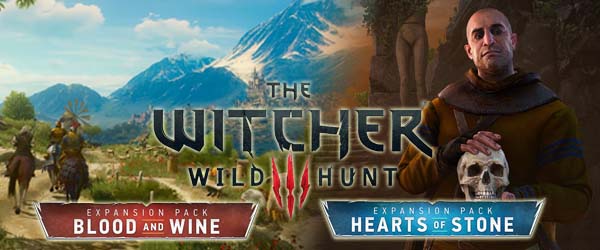
I just don't understand how CD Projekt Red can be such masters at world building and quest design, but are completely inept at everything that involves Geralt drawing a sword or throwing igni. I almost gave up on Hearts of Stone because the beginning of its main quest just put me into a controller-throwing rage.
Geralt is tasked with killing a mysterious sewer monster who has been killing women who go into the sewer hoping to find a toad who can be turned into a prince with a kiss. One of The Witcher III's long-standing annoyances for me is that it makes such a big deal about Geralt being so analytical that he prepares for every monster hunt with potions and so forth, but whenever a quest boss comes along, the game decides to just throw the player in with no chance to prepare. This quest provided no opportunity to investigate to learn what the toad monster is or what its weaknesses might be. When you hit an arbitrary point in the sewer, the game triggers a cutscene that just throws Geralt into the boss arena, so you can't re-equip yourself, respec, or otherwise prepare.
To make matters worse, the game checkpoints you inside the boss fight, instead of prior to the cutscene. If you die, you have to wait for the game's god-damned-bloody long-ass load times before having to go through the trouble of resetting your equipped potions or any other preparatory activities, only to survive for thirty seconds before the fracking toad kills you again and you have to sit through another two minutes of load screen before having to start it all over again. Just unacceptable, CD Projekt Red; absolutely unacceptable.
In order to beat the damn thing, I had to reload from an autosave earlier in the quest (fortunately, I didn't lose much progress) and use the Potion of Clearance to respec Geralt to take points out of my [currently useless] support skills and put them into abilities that buffed my attack, defense, and the two spells that are actually useful for this fight.
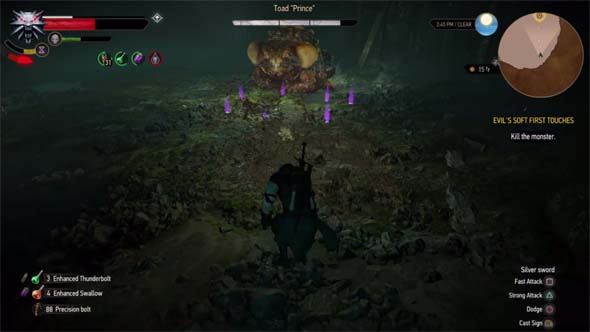
The boss fights in Hearts of Stone seem to break the game's rules, and frustrated me to no end.
To add insult to injury, this boss fight ends with a cutscene, and the next playable, non-dialogue sequence is another boss fight, this time a mage with an entourage of soldiers. Without any of my support or crowd-control spells, I ended up having to replay this fight several times as well (it didn't help that the mage seemed to have a one-hit kill area-of-effect tornado attack). At the end, I thought I would be able to respec my character back to the way I had him, but apparently that potion is only a one-time use. I had to fast travel around to several merchants to try to find someone who would sell another copy to me (because Kiera disappears after you finish the main story, so I couldn't buy it from her). It cost 1,000 gold! Then, after finding my way back to the original quest-giver, I got stuck in yet another obnoxious boss fight.
All three of these boss fights seemed to break the game's established rules. The first one kept hitting me with poison, so I tried using a potion that was supposed to allow me to heal from exposure to poison. Except the potion didn't work. Neither of the other two bosses were vulnerable to Yrden or to dimeritium bombs to block or negate their magic abilities. This all was incredibly frustrating, as one of my biggest pet peeves with video games is when the developers give bosses immunity to all the fancy support items and spells that the player has, which you've been saving up for just such an occasion - a boss being the one place where such tools are actually useful or necessary. On top of that, all three fights are needlessly long endurance matches that quickly devolve to repeating the same few actions a hundred times in a row. Absolutely, unforgivably terrible boss fights, the whole lot of them! Needless to say, this DLC did not get off on the right foot with me - much like the base game didn't.
But I grit my teeth and played through the base game, only to find some of the most outstanding quest design and characters that gaming has to offer. So I would do the same with the Hearts of Stone DLC. And once again, I was rewarded for my patience with a quality storyline.... [More]
785a1852-4d97-42a1-8809-18dc15cc467f|0|.0
Tags:The Witcher, The Witcher III: Wild Hunt, expansion, DLC, Hearts of Stone, Blood and Wine, CD Projekt Red, Geralt, open world, RPG, Olgierd von Everec, Iris von Everec, Gaunter O'Dimm, Toussaint, Beauclaire, vampire, homestead, estate, vineyard, immortality, predestination, France
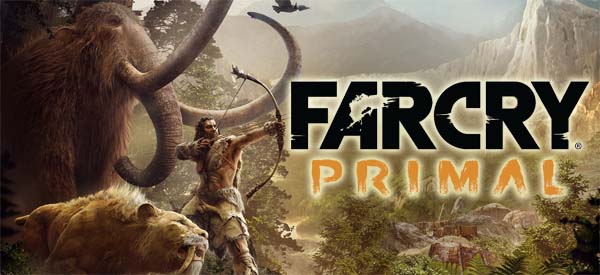
I've never played any of the Far Cry games. I possess a copy of Far Cry 4 because it came bundled for free with my PS4, but I've yet to actually insert the disc into the console and try the thing. I was intrigued by Far Cry Primal because it looked like it might explore a novel subject matter that games have kind of ignored for as long as I can remember. Apparently, Far Cry 4 had a bit in it in which you play as a primitive human riding around on animals during a drug-fueled hallucination, and Ubisoft decided to adapt that concept into a full game.
The last time that Ubisoft had done something like this, they had taken the naval combat from Assassin's Creed III (the completely dissociated highlight of an otherwise boring and stupid game) and converted it into Assassin's Creed IV: Black Flag. And I loved Black Flag! So I was optimistic that Ubisoft might have another novel treat in store for me. I've played dozens of first person shooters, but I've yet to play as a caveman in 10,000 BCE, so let's give this a go, shall we!
The game begins by showing the date 2016, with modern ambient sounds, apparently intended to make the player think that the game might have some kind of present-day framing device (similar to Assassin's Creed). But then the clock starts ticking back to 10,000 BCE, and the game begins. I wonder if this was intended to mock Assassin's Creed and subvert possible player expectations.
Stone age shooter
This game got off to kind of a rough start for me. I was killed by the mammoth in the tutorial because it charged at me before the game displayed the tutorial tip teaching how to attack with a weapon. So that seemed like a cheap death, and gave me a bad first impression. Fortunately, the next few hours of play didn't have any similarly sloppy design, and I was rather enjoying myself.
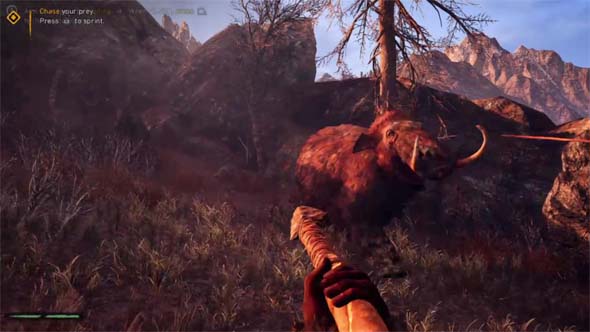
I died in the tutorial because the mammoth charged me before the game taught me how to use my weapon.
It didn't take long, however, for the novelty to wear off. Combat has a focus on melee combat with clubs and spears, which leads to a problem similar to other first-person hack-n-slash games: the constrained field of view makes situational awareness very difficult. Without the option to toggle to a third-person view, it's difficult to tell exactly what is going on immediately around your character, and close-quarters combat with mobs frequently degraded into just spinning around mashing the attack button. Fighting animals can be even worse, as many of them (such as dholes and badgers) are small and fast and incredibly difficult to actually hit. The problem is mitigated somewhat as the game goes on, as new utility abilities are introduced, but I was saddened that Ubisoft didn't really do anything particularly interesting with the basic combat.
And it doesn't really get much better when the utility abilities are introduced, as they mostly just involve simply sicking your tamed beasts on the enemies and hoping that the beast doesn't die. In the regular gameplay mode, you'll also have access to overpowered one-hit kill attacks and bombing runs with your owl that act similarly to an air strike or artillery bombardment in other games. These attacks are so overpowered that the Survival Mode disables them entirely. If you have a powerful enough wolf, bear, or saber-tooth tiger beast, you can often just get away with commanding it to charge a group of enemies while you sit back and watch.
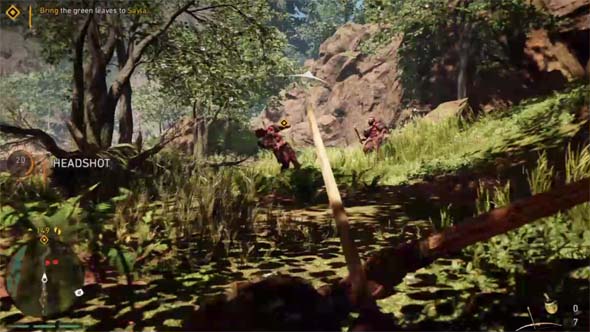
This is one game in which a bow and arrow actually makes sense as a primary weapon. [More]
f789f1b9-8096-44f0-a9aa-91493a4c83b7|0|.0
Tags:Far Cry, Far Cry: Primal, Ubisoft, prehistory, caveman, mammoth, wolf, bear, saber-tooth tiger, owl, beast, beast master, bow and arrow, spear, club, crafting, survival, open world, Darwin Award, Achievement unlocked
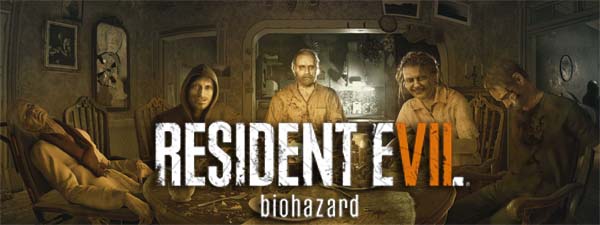
It's been a long time since I've given a crap about Resident Evil. I loved the classic Resident Evil games. The Play Station original is a foundational game for me, and jump-started my interest in horror and the macabre. I felt like the series jumped the shark with Resident Evil 4, however, and my interest in the series tanked with its abandonment of horror in favor of schlockey action-shooter gameplay. I played through Resident Evil 5's co-op with a friend, but didn't really enjoy myself, and after playing the abysmal demo for RE6, I skipped that one entirely.
So I was genuinely excited by Resident Evil VII: Biohazard. The popularity of first-person horror games, and the phenomenon that was P.T. / Silent Hills (not to mention the success of Resident Evil REmastered on Steam) obviously seems to have kicked Capcom in the butt and reminded them that there is still an audience for genuine horror games - an audience that mainstream gaming has neglected for most of the last decade. I'm not sure if development of REVII started as a response to P.T., or if it was already in the works following the success of games like Amnesia, Outlast, and Alien: Isolation. Either way, it's good to see major publishers embracing the genre again.
The family's new - but familiar - mansion
This new Resident Evil really does go back to the franchise's roots. The early hours of the game actually feel a lot like a combination of the original Resident Evil and Resident Evil 3: Nemesis, but updated with a first-person camera and a lot of modern horror contrivances. Long-time fans of the series will recognize the safe rooms and item-boxes. The classic health status indicator is now part of a watch on the character's wrist that you can see whenever you pull up your inventory. There's a foyer with a balcony. Doors are locked by silly, esoteric puzzle mechanisms that require themed keys, crests or various other stand-ins for keys. There's even a booby-trapped shotgun to tease you at the start of the game. Some of these elements of design feel appropriate, while other ham-fisted call-backs admittedly feel like the developers were trying too hard.
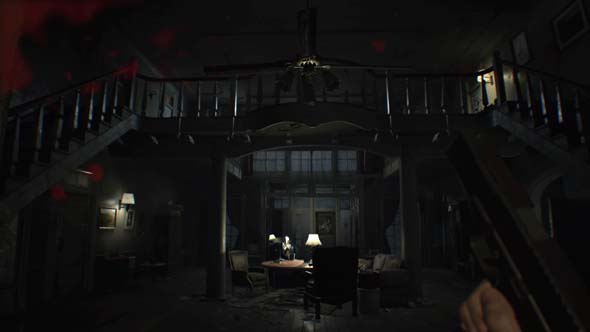
The mansion is new, but has many call-backs to the first game.
The map is well-designed, with its claustrophobic hallways, shortcuts, and lots of visual detail. Lighting is excellent, though the game is a bit too dark at the recommended brightness level (at least without a flashlight), and it becomes washed-out at higher brightness settings. Sound design is also quite exceptional, with the game giving great audio feedback (especially for the pursing stalkers). I also like a lot of the little details, particularly how using a key to unlock a door takes a small amount of time, during which you are vulnerable.
The family also makes for some excellent antagonists, especially compared to the likes of stupid, campy villains like Albert Wesker and Salazar. These villains have a lot of character, and there's enough detail in the mansion to give a sense of who these people might have been before they went off the deep end: the collectible football bobbleheads, for example. And on top of that, they are genuinely disturbing and threatening, and the whole game would probably be scary enough if you just spent the whole time avoiding them and trying to escape their murder house.
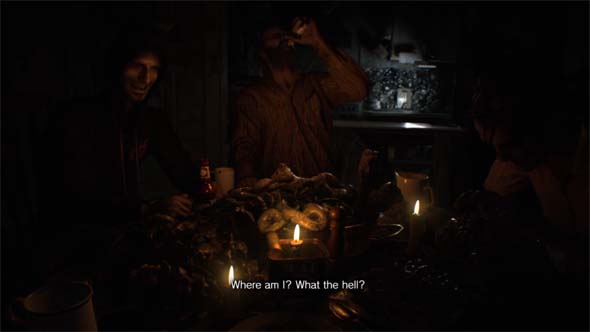
The family makes for genuinely disturbing villains that put RE's earlier villains to shame.
The save system is kind of an odd hybrid of the classic save system and more modern checkpoint systems. The logistics of the classic system have been scaled back, as you no longer require a consumable item (ink ribbon) to manually save (at least not on the default difficulty). But the game will also checkpoint you at certain points, and it maintains a single autosave slot with your checkpointed progress. So if you die to one of the obnoxiously-hard bosses, you don't have to go back a whole hour to your last manual save; instead, you get to restart at the most recent checkpoint.
However, the manual saves still have value, because Biohazard is structurally very similar to the original Resident Evil - both superficially and in terms of gameplay... [More]
a4e07563-fcc1-4e63-88fa-f5d8f517792b|1|5.0
Tags:Resident Evil, Biohazard, Resident Evil 7: Biohazard, Capcom, horror, survival horror, shooter, first person, inventory, resource management, mansion, autosave, save system, puzzle, logistics
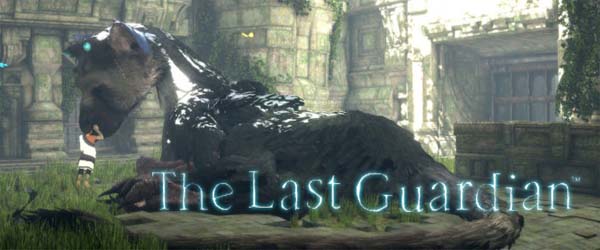
Being the follow-up to a masterpiece is no small order. Being the follow-up to two masterpieces is a Sisyphean task. Ico is a masterpiece of its time. Fumito Ueda and SIE Japan managed to follow that game with Shadow of the Colossus - a masterpiece of even higher order. The bar was set tremendously high for the team's third project: The Last Guardian. Multiple delays, a change in platform from PS3 to PS4, and Fumito Ueda's departure from Sony squashed a lot of the hype for the game. Might the game turn into vaporware? Or might it release in a condition analogous to Metal Gear Solid V?
On the surface, The Last Guardian comes off as being a mash-up of Ico and Shadow of the Colossus. Superficially, it's much more in-line with Ico: you play as a small boy who must guide a companion through a maze of environmental platformer obstacles and adventure puzzles. The catch this time around is that the companion happens to be a giant animal that you can climb and ride on.
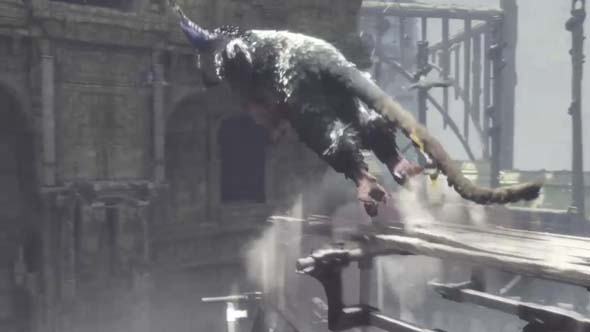
The Last Guardian share more with Ico, but your companion is a giant creature that you climb and ride on.
The big difference though, is that The Last Guardian is sort of an inversion of the gameplay of Ico. In Ico, the player character had to guide a helpless (some even speculated she is blind) princess through a castle and defend her from shadow monsters that try to drag her away. In The Last Guardian, however, it is the player character - the boy - who is mostly helpless. True, you have most of the agency and are guiding Trico through the maze. But Trico is the one with all the power, and your progress is often dependent on Trico getting you past obstacles.
This point is most hammered home by the game's combat mechanics - or rather, its almost complete lack thereof. The boy can't fight off the stone knights that hunt him down. You can only run away, or let Trico smash them into dust for you. If they catch you, they drag you off to a nearby mysterious blue doorway (a parallel to the smokey portals that the smoke monsters dragged Yorda through in Ico), and all you can do is mash buttons to kick and squirm. Ico and Shadow of the Colossus experimented with player agency by making the player question the motivations of the character and wonder if maybe you're doing more harm than good. The Last Guardian toys with agency in other ways. In this game, you, the player, are the helpless tag-along character in an escort quest. You get a glimpse through the eyes of Yorda from Ico or Ashley from Resident Evil 4.
The boy can't fight back, he can only kick and squirm - much like Yorda from Ico.
Not entirely though. The player and Trico make mutual contributions to progress, and their contributions are shared much more than Ico and Yorda. Much like how Yorda could occasionally open the magically-locked doors, the boy in Guardian also has to pull levers and open doors for Trico to pass from room to room. The boy also has to destroy glass eye murals that mesmerize and terrify Trico to the point of paralysis. The boy also hunts down barrels of [supposedly] food for Trico to eat whenever Trico is tired or wounded. But then there's also parts of the game in which the boy simply hops on Trico's back, and Trico leaps away to the next puzzle area without the player having to do anything... [More]
54c716c5-4407-4898-bee0-0725c5a7ce3e|1|5.0
Tags:The Last Guardian, Team Ico, Fumito Ueda, puzzle, platformer, Trico, child, escort quest, Ico, Shadow of the Colossus, PlayStation 4, Sony, exclusive, vaporware, Achievement unlocked
|

| 12 | | | | | | | 60 | | 11 | | | | | | | 55 | | 10 | | | | | | | 50 | | 09 | | | | | | | 45 | | 08 | | | | | | | 40 | | 07 | | | | | | | 35 | | 06 | | | | | | | 30 | | 05 | | | | | | | 25 | | 04 | | | | | | | 20 | | 03 | | | | | | | 15 | | 02 | | | | | | | 10 | | 01 | | | | | | | 05 |
|